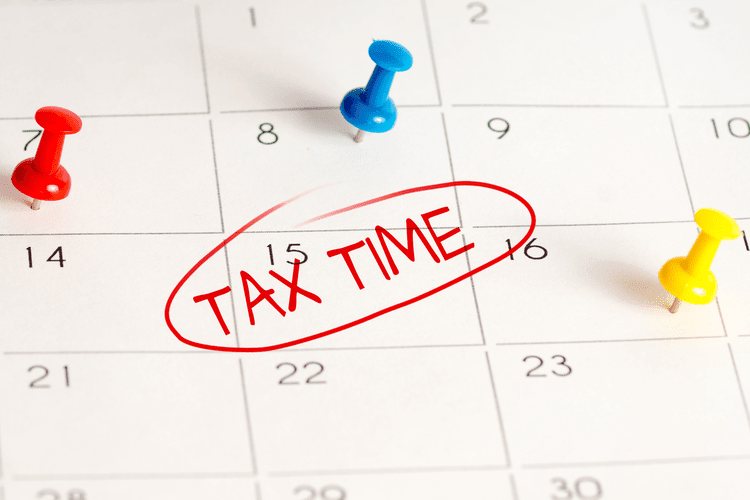Content

A basic limitation of the commercial-paper market is that its resources are limited to the excess liquidity that corporations, the main suppliers of funds, may have at any particular time. Another disadvantage is the impersonality of the dealings; a bank is much more likely to help a good customer weather a storm than is a commercial-paper dealer. Current liabilities are debts that you have to pay back within the next 12 months. If you’ve promised to pay someone a sum of money in the future and haven’t paid them yet, that’s a liability. Cryptocurrencies can fluctuate widely in prices and are, therefore, not appropriate for all investors.
If the cash discount is not taken, payment is due 30 days after the date of invoice. The main sources of short-term financing are trade credit, commercial bank loans, commercial paper, a specific type of promissory note, and secured loans. Use of financial leverage to buy assets or fund growth amplifies the earnings potential of a company. For instance, if a company buys an asset using LTD, and it generates more return than the interest on the LTD. In accounting terms, short-term debt is referred to as current liabilities. Similarly, long-term debts are called long-term liabilities in accounting parlance.
Definition Of Long Term Debt In Balance Sheet
As we know that long term debts are payable in more than 1 year such as 10 or 20 years bonds, hence bonds are kept under non-current liabilities. But some portion of these bonds is to be paid in less than a year, hence that portion is kept under current liabilities. The net debt to earnings before long term debt examples interest, taxes, depreciation, and amortization ratio measures financial leverage and a company’s ability to pay off its debt. Essentially, the net debt to EBITDA ratio (debt/EBITDA) gives an indication as to how long a company would need to operate at its current level to pay off all its debt.

She has been an investor, entrepreneur, and advisor for more than 25 years. If the long-term debt coming due is going to be refinanced or retired using new debt. Disclose information about long-term liabilities — including long-term debt and other long-term liabilities.
Managing Your Money
Different sources of long-term funds have their own advantages and disadvantages. Since the entire long term portion of capital may not be funded by shareholders funds, long term loans come into the picture. There are certain capital intensive industries like power and infrastructure which require a higher component of long term debt.
As we said before LTD comes in the balance sheet and is a non-current liability. A company can club all its long term debts into a one line-item, and then list different types of debt under it. Both the treatments are correct, and a company may go for either of the two depending on its accounting policies. Examples of short term debt include payroll taxes, short-term leases, bills due such as rent, water, and electricity. Examples of long term debt include deferred expenses and bonuses that are due in the next financial year. In the business world, long-term debt is money that is owed to lenders for a period of more than one year from the date of the current balance sheet.
Types Of Long Term Debt
The employer sets aside funds for this purpose by investing in the pension plan/trust, generally referred to as plan assets. The present value of the pension obligation is referred to as the Projected Benefit Obligation . Bonds are typically secured i.e., backed by specific collateral assets. Gain the confidence you need to move up the ladder in a high powered corporate finance career path. When a receivable is pledged, the borrower retains the risk that the person or firm that owes the receivable will not pay; this risk is typically passed on to the lender when factoring is involved.
Accounting Examples of Long-Term vs. Short-Term Debt – Motley Fool
Accounting Examples of Long-Term vs. Short-Term Debt.
Posted: Mon, 24 Oct 2016 07:00:00 GMT [source]
As part of their analysis Standard & Poor’s will issue a credit rating that is designed to give lenders and investors an idea of the creditworthiness of the borrower. Please consult the figure as an example of Standard & Poor’s credit ratings issued for debt issued by governments all over the world. Financial data used to calculate debt – ratios can be found on a company’s balance sheet, income statement and statement of owner’s equity.
The Basics Of Municipal Bonds
Long-term liabilities differ from current liabilities, which a company expects to pay back within one year. Several different components make up your small business’s long-term debt. Some of these components make up the long-term liabilities section of your balance sheet, while some remain off the balance sheet. The Debt-to-Equity Ratio is a financial ratio indicating the relative proportion of shareholder ‘s equity and debt used to finance a company’s assets, and is calculated as total debt / total equity. Bonds are a part of long term debt, but with certain special characteristics. Those who own the bond are the debtholders or creditors of the entity issuing the bond.
The real reason behind companies preferring such debt is to take advantage of financial leveraging. Going back to our bank loan example, let’s assume a company has a $100, year bank loan for a building project. Each month the company makes a $500 payment and records the principle portion of the payment and the interest portion. For simplicity sake, let’s just assume each $500 dollar payment consists of a $300 principle payment and a $200 interest payment.
The higher the Times Interest Earned Ratio, the better, and a ratio below 2.5 is considered a warning sign of financial distress. The composition of debt and equity and its influence on the value of a firm is a much debated topic. Walmart is a US multinational retail organization, headquartered in Bentonville, Arkansas. Below is the snippet of its balance sheet from its 2020 annual report. The main purpose of issuing bonds is to borrow money for the long term when the amount of money needed is too much for one lender to supply. At the end of the lease period, ownership of the leased asset is transferred to the lessee. Long-term LiabilitiesLong Term Liabilities, also known as Non-Current Liabilities, refer to a Company’s financial obligations that are due for over a year .
Balance Sheet Example
Close tracking of these debt payments is required to ensure that short-term debt liabilities and long-term debt liabilities on a single long-term debt instrument are separated and accounted for properly. To account for these debts, companies simply notate the payment obligations within one year for a long-term debt instrument as short-term liabilities and the remaining payments as long-term liabilities. The lending institution’s funds are tied up for a long period, and during this time the borrower’s situation can change markedly. Commercial paper, a third source of short-term credit, consists of well-established firms’ promissory notes sold primarily to other businesses, insurance companies, pension funds, and banks.
•Emergency fund.
•Payments toward rent, insurance or student loans.
•Credit card debt payments.
•Personal goods.
•Travel.
•Wedding.
•Minor repairs and home improvementsMedium Term Goals
These goals fall between short and Long term goals.
Examples:
>>4
— Abojani Investment🇰🇪🇺🇬🇹🇿 (@TheAbojani) November 29, 2021
Investors look at a company’s long term debt to gauge how much leverage it has. Like shareholders, the holders of long term debt are suppliers of funds but they rank higher than shareholders in getting their money back if a company fails. In a liquidation scenario, therefore, Shareholders in highly indebted companies are unlikely to see anything from the sale of company assets. Long Term Debt or LTD is a loan that is held beyond 12 months or more.
Financial Leverage helps a company in increasing its earnings because such LTD carries a fixed cost. Also, the interest payment is usually lower than the earnings that a company expects from the asset. Thus, companies prefer to have some portion of their total capital in the form of debt. A long-term liability is a loan that will not be fully repaid in the current period. These loans typically have 15 or 30 year terms, so the borrower won’t actually pay off the entire balance and retire the loan in the current period.
The process of paying back the loan principal over the term of the loan is known as “loan amortization.” A company’s long-term debt, or liability, consists of items it expects to take longer than a year to pay off.
Non-convertible debentures cannot be converted into equity shares and carry a higher interest rate as compared to convertible debentures. Debentures, like bonds, are also given a credit rating depending on their risk. Are not secured by any collateral and are generally issued for specific purposes, such as planned projects. It is generally the revenue proceeds from the specific project that is later used to repay the debenture principal.
- Non-convertible debentures cannot be converted into equity shares and carry a higher interest rate as compared to convertible debentures.
- Usually the term loan is retired by systematic repayments over its life.
- Any trading history presented is less than 5 years old unless otherwise stated and may not suffice as a basis for investment decisions.
- Although average debt ratios vary widely by industry, if you have a debt ratio of 40% or lower, you’re probably in the clear.
- Subtract the current portion of long-term debt from the total principal owed.
- Such loans require collateral in case the company defaults on the loan.
Municipal bonds are debt security instruments issued by government agencies to fund infrastructure projects. Municipal bonds are typically considered to be one of the debt market’s lowest risk bond investments with just slightly higher risk than Treasuries. Government agencies can issue short-term or long-term debt for public investment. Companies and investors have a variety of considerations when both issuing and investing in long-term debt. For investors, long-term debt is classified as simply debt that matures in more than one year. There are a variety of long-term investments an investor can choose from.
The interest cost of term loans varies with the size of the loan and the strength of the borrower. The repayment schedule related to this loan shows that the company will pay $200,000 within one year period and the remainder in four equal installments in four year period following the current year. The current portion of this long term debt is $200,000 which the Exell Company would classify as current liability in its balance sheet. The remaining amount of $800,000 is the long term liability and would be reported as long-term debt in the long term liabilities section of the balance sheet. Debts, or liabilities, are the claims creditors have against a firm’s assets. Assets consist of anything that the firm owns that is of monetary value, such as real estate, equipment, cash and inventory. You will find a business’ debts listed on its balance sheet in the liabilities section immediately following the section listing the firm’s assets.

There are some components of a company’s long-term debt that it is not required to report directly on the balance sheet, but that it typically reports in the footnotes to the balance sheet. Examples of these off-balance-sheet items include certain contractual agreements and operating leases, which are agreements to lease assets that you do not intend to own. Although these items are absent from the balance sheet, they still contribute to your overall long-term debt. Long-term liabilities are obligations that are due at least one year into the future, and include debt instruments such as bonds and mortgages.
What are the four sources of long-term debt financing?
The long-term sources include issuing long-term debt such as bonds, debentures, bank borrowings, issuance of common stock, issuance of preferred stock, and reinvestment of the net income available to common shareholders in the form of retained earnings.
Many lenders, in examining financial statements, give less weight to a lease obligation than to a loan obligation. To calculate a quick ratio, subtract a firm’s inventory from its current assets. The resulting ratio tells you how much money the firm has available to pay short-term debt. For example, assume a firm has $100,000 in current assets after excluding inventory and has $80,000 in short-term debt. This means the firm has $1.25 in cash or cash equivalents available for each dollar of short-term debt. A long-term debt is any liability owed by a business that is not due for more than one year.
However, the primary distinction between on and off-balance sheet items is whether or not the company owns, or is legally responsible for the debt. Furthermore, uncertain assets or liabilities are subject to being classified as “probable”, “measurable” and “meaningful”. If a company’s Times Interest Earned Ratio falls below 1, the company will have to fund its required interest payments with cash on hand or borrow more funds to cover the payments. Typically, a Times Interest Earned Ratio below 2.5 is considered a warning sign of financial distress.
Once this process is completed, the company is ready to issue long-term debt. The two forms of long-term debt most often used to create capital are bonds payable and long-term notes payable. Because most accounting these days is handled by software that automatically generates financial statements, rather than pen and paper, calculating your business’ liabilities is fairly straightforward. As long as you haven’t made any mistakes in your bookkeeping, your liabilities should all be waiting for you on your balance sheet. If you’re doing it manually, you’ll just add up every liability in your general ledger and total it on your balance sheet.
Coupon amount that needs to be paid in 1 year is kept as “Current Portion of long term debt” and is kept under current liabilities. In most companies, the decision to issue any form of long-term debt takes a good deal of consideration. The issuance of the debt often must be approved by the company’s board of directors. The bylaws of the company may also state that, prior to issuing long-term debt, stockholders must also approve the proposition.
The purpose of a balance sheet Chase for Business – Chase News & Stories
The purpose of a balance sheet Chase for Business.
Posted: Tue, 07 Sep 2021 15:10:38 GMT [source]
The leasing company is referred to as the lessor, and the user is referred to as the lessee. Capital LeaseA capital lease is a legal agreement of any business equipment or property equivalent or sale of an asset by one party to another .
•Buying a car.
•Saving for a down payment.
•Paying off debt.Long Term Goals
These goals majorly focus on big picture goals with a timeframe that ranges from several years to decades.
Examples:
• Paying off a mortgage.
• Starting a business.
• Saving for retirement.— Abojani Investment🇰🇪🇺🇬🇹🇿 (@TheAbojani) November 29, 2021
However, their prominently distinguishable feature is the shorter maturity of treasury issues—the U.S. Treasury, for example, issues notes with maturities of 2, 3, 5, 7, and 10 years, while bonds are issued for longer terms as well. Some bonds/debentures may also be convertible to equity shares, fully or partially.
Author: David Paschall

